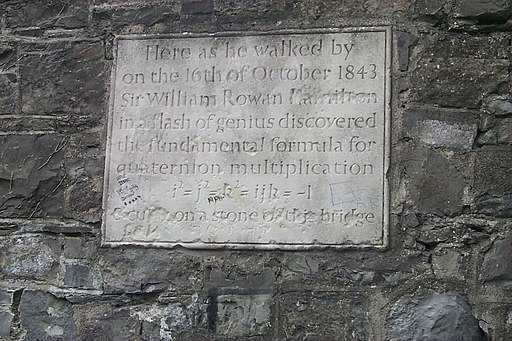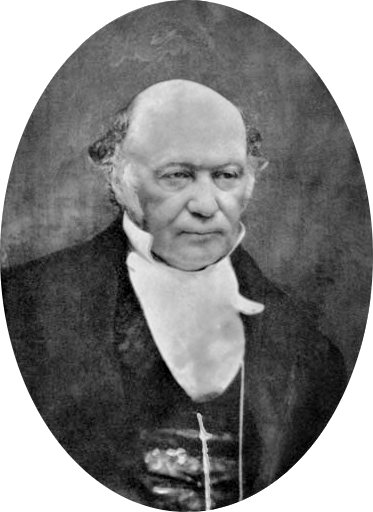This rather poorly maintained plaque under Broome Bridge, which straddles the Grand Canal on the northside of Dublin, marks the spot where a certain Irish mathematician had a Eureka moment, on this day (16th October) in 1843. It is a rather humble acknowledgement of a discovery that would prove to be of groundbreaking importance.
The inscription reads:
William Rowan Hamilton was a midnight child; his date of birth is given as 3-4 August 1805. Growing up, he showed a remarkable aptitude for languages but as he approached his adult years, he started to concentrate more on mathematics - the universal language.
Having studied at Trinity College, Dublin he was appointed Professor of Astronomy in 1827, prior to his graduation and took up residence at Dunsink Observatory, where he lived and worked for the rest of his life.
It was on the occasion of one such stroll from the observatory at Dunsink, along the Grand Canal in the company of his wife that Hamilton had his moment of inspiration that continues to be commemorated, to this day. Mathematicians from all over the world have been known to take part in the commemorative walk retracing Hamilton's steps, which takes place every year on the anniversary.
The event is justly celebrated. The fundamental formula for quaternions continues to have relevance to mathematics in both the theoretical and applied fields, including computer graphics, control theory, signal processing, and orbital mechanics.
 |
| By Wisher at en.wikipedia [Public domain], from Wikimedia Commons |
The inscription reads:
Here as he walked by on the 16th of October 1843, Sir William Rowan Hamilton, in a flash of genius, discovered the fundamental formula for quaternion multiplication i² = j² = k² = ijk = −1 & cut it on a stone of this bridge.
 |
| William Rowan Hamilton Public domain, via Wikimedia Commons |
Having studied at Trinity College, Dublin he was appointed Professor of Astronomy in 1827, prior to his graduation and took up residence at Dunsink Observatory, where he lived and worked for the rest of his life.
It was on the occasion of one such stroll from the observatory at Dunsink, along the Grand Canal in the company of his wife that Hamilton had his moment of inspiration that continues to be commemorated, to this day. Mathematicians from all over the world have been known to take part in the commemorative walk retracing Hamilton's steps, which takes place every year on the anniversary.
The event is justly celebrated. The fundamental formula for quaternions continues to have relevance to mathematics in both the theoretical and applied fields, including computer graphics, control theory, signal processing, and orbital mechanics.
| Broom Bridge (or Brougham Bridge as Hamilton called it) Public domain via Wikimedia Commons |

No comments:
Post a Comment